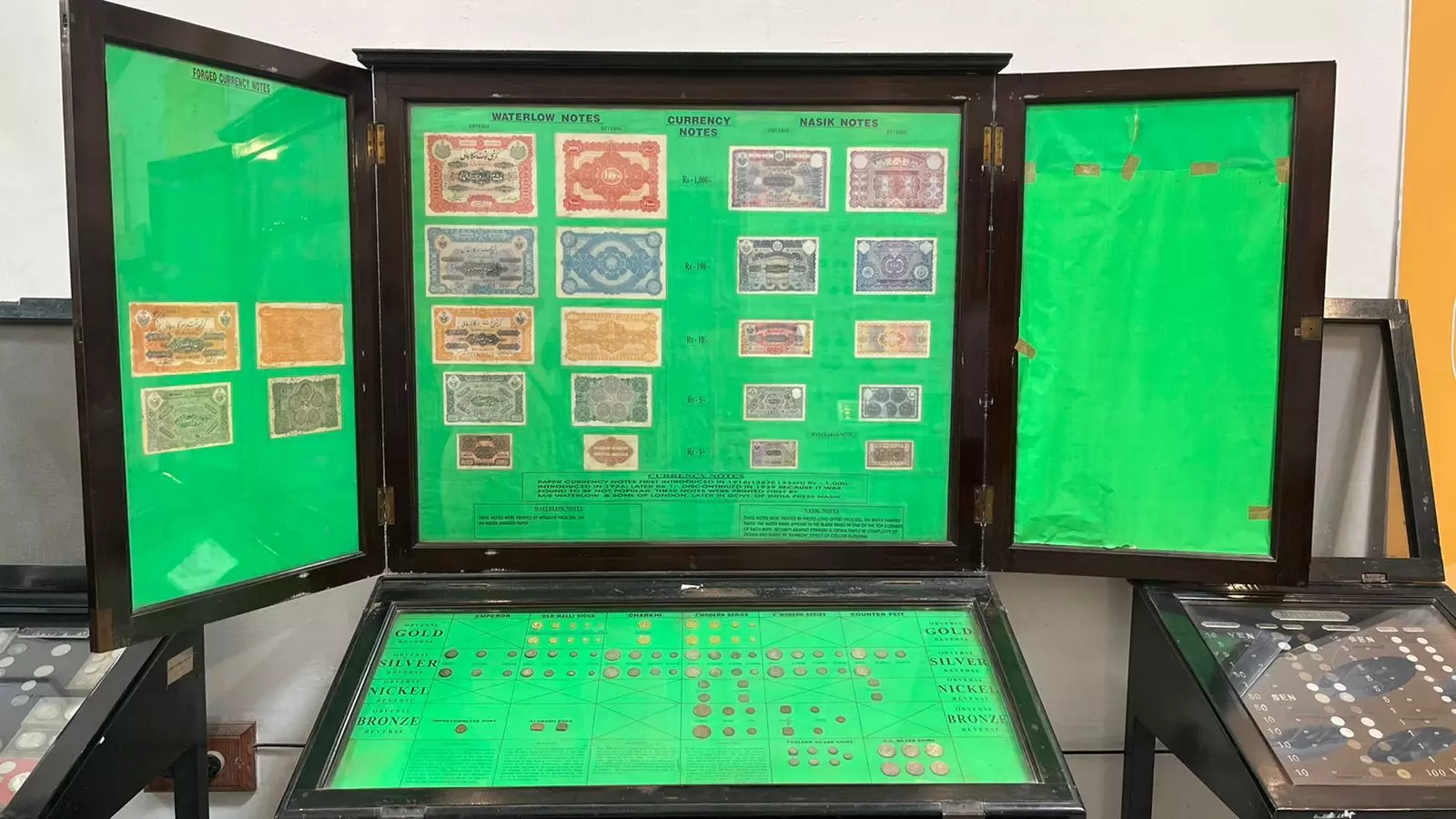Osmania Siccas to Brown Boulder: Visit the Deccan heritage at Hyderabad Coin Museum
A coin museum has been thrown open to the public at Saifabad Mint in Hyderabad. Rare coins and currency printed at the Saifabad Mint will be showcased at the museum apart from the machinery used for minting coins and currency during the Nizam-era is also on display.
By Amrutha Kosuru
"This Museum is special to me because I have used all the currency- the mints and Osmania siccas, as a child," says Anuradha Reddy, INTACH (Indian National Trust for Art and Cultural Heritage) convenor for the Hyderabad chapter.
She points out the intricately preserved Osmania Siccas at the newly opened Saifabad Mint Museum and explains that the 'Hyderabad rupee' continued to be used in the princely state of Hyderabad well after independence until 1959.
A coin museum has been thrown open to the public at Saifabad Mint in Hyderabad. Rare coins and currency printed at the Saifabad Mint will be showcased at the museum apart from the machinery used for minting coins and currency during the Nizam-era is also on display.
"During World War-1 when metal became scarce is when notes were printed. The value of the notes was written in 5 different languages," Anuradha says.
All the notes have big round coin-like symbols on them. Each currency note had a different number of these circles which directly indicated its value of it. "So anyone who didn't know how to read could also tell the value of the note just by counting," she adds.
Anuradha says that she has never seen a more beautiful currency in her life.
The Museum also has weights and a mechanical machine- a weight scale, that was used to measure coins made from various materials.
"Saifabad Mint Museum beautifully depicts the History of Mints. The collections include the first Rupiya Coin issued by Sher Shah Suri, History of IGM, Hyderabad, and History of the Mints under the Government of India, the Asaf Jahi coins, and a photo collection of Glimpses of Old Mint Memories," says Rehan Ahamad, Curator of the Museum.
The Museum presents Coins based on shapes and Coins made from Metals of different types.
In a corner, one can also find a big brown boulder - a precious Die striking stone that enabled punch-marked coin way back in 1803 at Sultan Sahi. "It hasn't been mover ever since and is at the same position," Rehan says.
"Saifabad Mint was the epicenter for the Minting of Coins, holding a special place in the history of India, known for its exceptional calligraphic quality. There was a point when the quality and production of the coins were higher than their value," Rehan says.
The architecture and functionality of the Saifabad Mint are unique for their structural stability. The old gun barrels decorate the entranceways. The columns are made of steel with beautiful carvings.
History of the Mint:
Hyderabad Mint is the third to be set up in the country after Kolkata and Mumbai. Saifabad Mint was shifted to the current fully-functioning Cherlapally in 1997.
In 1803 CE, the Nizam III, Nawab Sikandar Jah gave orders for a Royal Mint, which was established in the Royal Palace at Sultan Shahi, Hyderabad. In 1893 CE, the Royal Mint of Hyderabad was moved from Sultan Shahi to a special building set aside for the purpose in Dar-us-Shafa, where coins were still handmade.
Nizam VI, Mahaboob Ali Khan, and Mir Osman Ali Khan Nizam VII are considered the fathers of the Modern Mint, which was modernized by the introduction of machinery in 1895 CE. In 1903 CE, the entire process of minting in Hyderabad State was overhauled on the lines of European Mints, and the Mint was now moved to Saifabad to start operations from 13-July-1903 with the latest machinery. Consequent to the Federal Financial Integration of Hyderabad State in 1950 CE, the Mint was taken over formally by the Government of India.
Hyderabad was the only Indian princely state that was permitted to continue issuing its notes after it was subjected to join the Dominion of India in 1948 and the Republic of India in 1950.
Entry to the Museum will be free from June 8-13. It shall remain open from 10 am to 5 pm. It has a sales counter that sells rare coins made at the Saifabad Mint. The coin prices range from Rs 500 to Rs 5000.